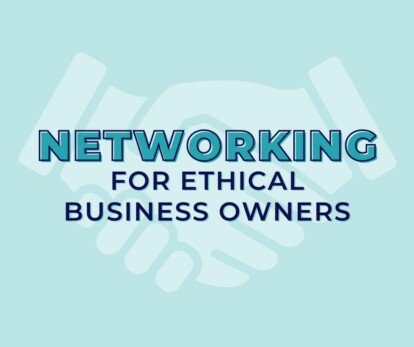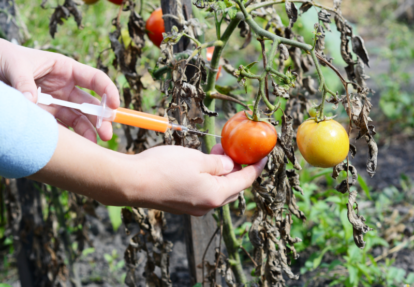Networking for ethical business owners: 11 ideas for collaboration


Clean label is a growing movement to highlight products that feature natural, familiar ingredients with no artificial colours, flavourings, sweeteners or preservatives (in the case of food and drink items).
It’s also becoming a larger, catchall term for a desire by consumers to understand the impact that products and services, and the companies behind them, have on the planet.
When people talk about clean label, they often mention ingredient transparency too as if the two terms are interchangeable.
While there is some overlap between clean label and ingredient transparency, there are also some important differences.
In today’s blog, we’re going to take a look at the clean label movement as well as defining what’s meant by ingredient transparency.
One of the issues with “clean label” as a term is that there isn’t a single definition or standard. This means companies and consumers may talk about “clean label” and mean different things.
Broadly speaking, clean label is – as mentioned above – an indicator of products containing ingredients that are clean, wholesome and natural, with no artificial/chemical additives.
It’s a term most often associated with food and beverages but is increasingly becoming something that consumers want for other products too.
People expect to see shorter ingredient lists on clean label products and to be familiar with what each ingredient is.
Ingredient transparency goes further than clean label.
People are becoming far more educated and selective about what they buy. They want to know that their money is being used ethically to benefit the planet and align with their values rather than funding harmful practices of any kind.
The demand for ingredient transparency recognises that it isn’t enough to know if an ingredient is natural or perceived as healthy.
Consumers want companies to explain the origins of their ingredients and the practices used to obtain them. This is about more than food safety.
Common questions regarding ingredient transparency include:
– What ingredients are in this product?
– Where do they come from?
– How were they sourced and produced?
– How might this product or the ingredients in it affect my long-term health or the health of other animals?
– Were non-human animals exploited or harmed to make this product?
– What are the labour practices of every business in the supply chain?
– How environmentally sustainable is each ingredient?
People also want to understand what happens to a company’s profits.
– Does a business donate to or invest in unethical practices or political organisations that are not aligned with the consumer’s values?
– How much are a company’s executives paid in comparison to the average wage across the wider organisation?
– How much energy used by a business comes from clean and renewable sources?
These are just a few examples but we can see that ingredient transparency is about being honest and open about every aspect of the supply chain and ingredients used, even when they’re not clean.
Ingredient transparency allows consumers to make fully informed choices about what to buy and whether it aligns with their personal values.
It’s more about facts than perception.
Both the clean label movement and ingredient transparency have been born out of consumer demand for businesses to clean up their supply chains and use socially responsible, minimally processed ingredients.
There is also increasing recognition that we have to take responsibility as consumers too. We can’t mindlessly buy without a conscience, a belief that’s at the heart of ethical consumption.
It’s only by demanding accountability from businesses that we can create meaningful change to the corporate food system and other industries; change that will benefit all life on the planet.
It’s clear that we are facing environmental, health and social crises throughout the world. People are understandably concerned about the future and asking what they can do, individually and collectively, to make a difference.
Harvard Business Review reported that Millennials, in particular, (i.e. those born between 1981 and 1996), are a key driving force behind the clean label movement. They have money to invest in raising healthy families and want a better world for their children.
One survey found that 86% of Millennial mums are prepared to pay more for products that offer complete transparency, often prizing this above other factors and being willing to swap to more transparent brands.
People want good behaviour from the companies they work for, invest in and buy from.
Other generations are joining this movement too.
Technology has a part to play in this, especially the internet and social media. People are now able to share their expectations, call out bad practice and investigate the origins of ingredients for themselves.
It’s getting harder for businesses to hide their practices and, if an ingredient is harmful, people will share that information.
Apparently, fewer than one in four consumers trust what’s on their food labels. Younger people, especially, have a high level of scepticism and want better ethical standards from brands (this particularly relates to Generation Z, who were born between 1997 and 2012).
For them, conversations about the environment, climate change, healthy eating, etc. have always been part of everyday life, be it in school, on the news, among their peers or at home.
They’re taking their concerns about these issues and expecting businesses to respond.
It’s important that we do our due diligence as consumers.
As mentioned earlier in this article, there isn’t currently a defined standard for clean label products. This has led to some concerns that businesses may try to “greenwash” their ethical credentials to appear better than they really are, or that less clean elements of a product may be hidden (e.g. natural flavourings dissolved in propylene glycol, a highly-processed synthetic substance).
What does a company mean when they say something is “locally grown” or “humane”, for example?
We may need to look beyond a clean label for information, which is where ingredient transparency can help.
Government legislation can affect labelling too, so we have to be mindful of this.
Some food technologists warn that the perception of clean label as healthy isn’t always accurate and that some natural foods have “chemical”-sounding names but are nutritious, clean ingredients.
Knowing these issues, it makes sense that many people want to go beyond clean label into full ingredient transparency. Maybe it’s in the sharing of fully-supported facts, rather than perceptions, that consumers, companies, scientists and more will find common ground.
There are a number of organisations around the world championing the clean label movement. We’d suggest you try a Google search for current information about schemes in your country.
A growing number of businesses are posting information about their ingredient transparency and ethical practices on their websites, so this is a good starting point for any product or service.
If you can’t find open and honest information about a product, reach out to the brand concerned and ask questions. The more we can show that there’s a requirement for transparency, the more businesses will have to step up.
Some companies publish a list of ingredients they won’t use under any circumstances, as well as what they will. This can provide valuable information.
Here at Ethical Globe, we’re delighted to have multiple members who are shining examples of how ingredient transparency is possible. Look out for them on our social media pages where we’ll be doing some shout-outs to their brilliant work.